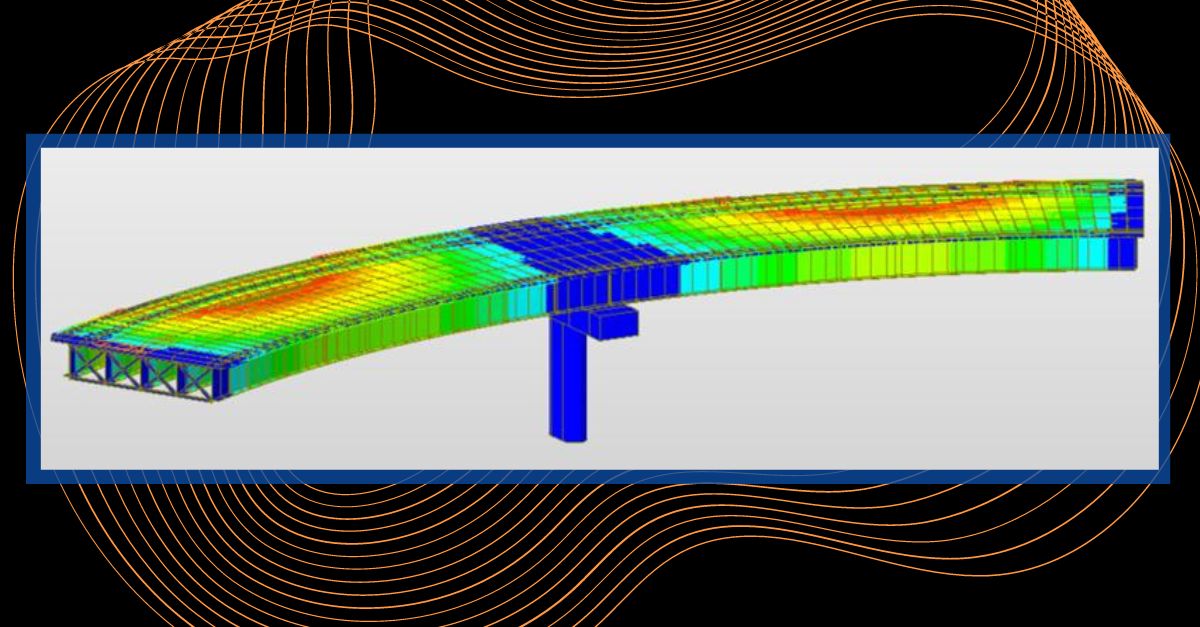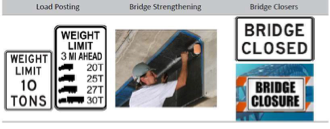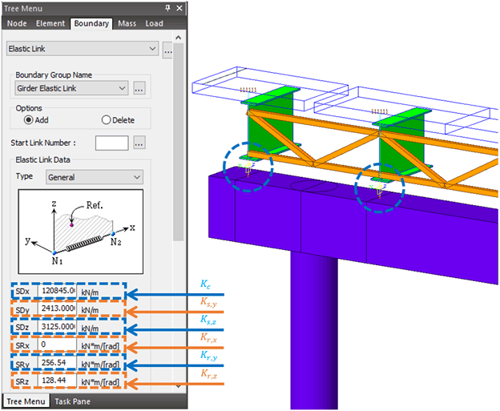Understanding Load Rating of Bridge as per AASHTO LRFR

Author: MIDASoft
Publish Date: 14 Mar, 2022
The bridge load rating is a procedure to evaluate the adequacy of various structural components to carry predetermined live loads. In simple words, it is the determination of the live load-carrying capacity of the bridge. Load ratings are expressed as a rating factor (RF) or as a tonnage (for legal and permit vehicles) for a particular vehicle.
-1.png?width=666&name=image%20(1)-1.png) Figure 1: Steel composite I Girder Bridge evaluated for Load Rating
Figure 1: Steel composite I Girder Bridge evaluated for Load Rating
Purpose
It helps us to know the ability of the bridge to carry live load for design and allowable legal vehicles, overloads, and to determine weight postings. Hence, the bridge rating factors can be used to aid in decisions about the need for:
- Load posting,
- Bridge strengthening,
- Overweight load allowances
- Bridge closers

Figure2: Application examples after evaluating the Load rating of a bridge
How load rating philosophy is different from bridge design philosophy?
- Bridge design provides a more conservative reliability index and evaluates the structure for serviceability and durability. HL-93 is the primary loading considered.
- Bridge rating tends to provide a lower reliability index but for a wider range of vehicles. As the vehicle weights and configuration are more known the live load factors (a measure of uncertainty) are reduced.
- Bridge design accounts for a larger suite of environmental loads (wind, seismic, etc.) than bridge load rating. The probability of occurrence of that these will occur at the same time as a permit or maximum live load is low. Hence, another reason for the lower reliability index.
Load rating as per AASHTO LRFR
The LRFR methodology consists of three distinct levels of evaluation:
- Design load rating
- Legal load rating
- Permit load rating
The result of each evaluation serves a specific purpose and also informs the need for further evaluations.
1. Design load Rating
It is a first-level assessment of bridges. It gives a measure of the performance of the existing bridge to current LRFD bridge design standards.
Purpose: Design load rating can serve as a screening process to identify bridges that should be load rated for legal loadsThere are two levels of the Design Load Rating:
- Inventory Rating Level
- Operation Rating Level
Load rating based of the operation rating level generally describes the maximum permissible live load to which the structure may be subjected. Generally, corresponds to the rating at the Operating level may shorten the life of the bridge
2. Legal Load Rating
This second level rating provides a single safe load capacity (for a given truck configuration) applicable to AASHTO and State legal loads
Purpose: Bridges that do not have sufficient capacity under the design-load rating shall be load rated for legal loads to establish the need for load posting or strengthening.
3. Permit Load Rating
This third level of rating should only be applied to bridges having sufficient capacity for legal loads. In other words, Permit load rating should be used only if the bridge has a rating factor greater than 1.0 when evaluated for AASHTO legal loads.
Purpose: Permit load rating checks the safety and serviceability of bridges in the review of permit applications for the passage of vehicles above the legally established weight limitations.
Process of load rating
The process of load rating can be understood from the below-shown chart flow:
-1.png?width=373&name=image%20(4)-1.png)
Figure3: Process of Load Rating
Calculation of Rating Factor (RF) as per AASHTO LRFR 2019
The RF value shall be taken as below according to the LRFR standard:
-1.png?width=456&name=image%20(5)-1.png)
Figure4: Rating equation as per AASHRO LRFR 2019
Load rating in midas Civil
midas civil offers the code AASHTO LRFR 19 for the calculation of load rating. The feature is defined in such a way that the user input can be provided in the simplest way possible.
-2.png?width=706&name=image%20(6)-2.png) Figure5: Load Rating feature in midas Civil
Figure5: Load Rating feature in midas Civil
Load rating feature is facilitated for both, steel composite bridges as well as PSC bridges.
.png?width=263&name=image%20(7).png)
Figure6: Defining load case for load rating check
- The checks can be done for all the limit states valid.
- As we have discussed that the load rating can be of 3 types, so based on the type of moving load defined, an evaluation live load model can be selected.
We get the load rating design results in the form of tables as shown below:
.png?width=648&name=image%20(8).png)
Figure7: Load rating results for flexure in tabular form
Apart from the tabular results, an Excel report is also generated with the results so that it facilitates the design engineer in his work in the best possible way:
.png?width=559&name=image%20(9).png)
Figure8: Load rating design report extracted from midas Civil
Conclusion
So, by going through the article we’ve understood the importance of Load rating, the philosophy behind it, and the process of doing the same. midas civil provides the platform for performing the load rating design for an engineer. Hence, it helps the engineer start by accurately simulating the model with construction stages, then performing the analysis and design for it, and then at the end facilitating the load rating design for the same bridge.



Add a Comment